Results 2,181 to 2,190 of 12089
Thread: Anandtech News
-
09-05-12, 05:30 PM #2181
Anandtech: Building the 2012 AnandTech SMB / SOHO NAS Testbed
The market for network attached storage (NAS) devices has registered huge gains over the last few years. In keeping up with the market trends, the coverage of NAS units has also seen an uptick on AnandTech since the middle of 2010.  We strive to provide readers with comprehensive coverage and improve our reviews with the help of reader and industry feedback. Some of the aspects which are barely covered in most NAS reviews include the performance of the unit when accessed from multiple clients and performance degradation as the disks get filled up. Towards the end of 2011, we started evaluating approaches to cover these important aspects. The end result was a new NAS testbed.
Read on for details of our approach and build process. We will also have a sneak peek at what can be expected in the upcoming NAS reviews.

More...
-
09-06-12, 02:30 AM #2182
Anandtech: AMD’s Enduro Switchable Graphics Levels Up
A couple weeks back, I contacted AMD to let them know I was working on a notebook review—a Clevo P170EM from AVADirect with HD 7970M graphics. Much to my surprise, when I received the notebook I discovered it used AMD’s Dynamic Switchable Graphics, now rebranded as Enduro. It has been just over a year since my last look at the technology, where things were so bad that I felt most users would be better off if they had only discrete AMD GPUs and no switchable graphics—or they could simply buy NVIDIA Optimus enabled laptops.
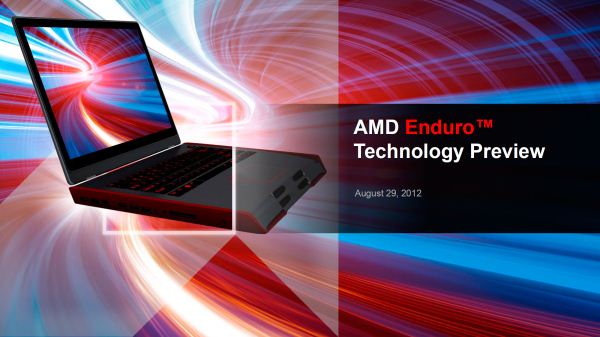
My initial experience with the P170EM wasn’t horrible, but I did discover rather quickly that one of my biggest concerns—the ability to update drivers—was still MIA, not to mention the Enduro UI seemed largely unchanged. As luck would have it, AMD let me know that they were working to address both problems and that they could provide me updated drivers as well as the first look at what their latest iteration of Enduro brings to the table. Armed with the new drivers and some initial testing, it looks like Enduro may finally be turning into the Optimus competitor we’ve always wanted. What has changed during the past year, and when will these changes become publicly available? Read on as we put AMD’s latest to the test.

More...
-
09-06-12, 09:00 AM #2183
Anandtech: AT&T Announces 9 New Live LTE Markets, 40 More Before End of 2012
In a flurry of press releases today, AT&T announced a slew of new 4G LTE (Long Term Evolution) markets. The news includes a total of 49 new markets, 9 of which are online today, 40 of which will come online before the end of 2012. There's no doubt some strategery involved here, as this announcement comes just under a week before the formal announcement of Apple's upcoming iPhone which will undoubtedly include LTE. I've gone through all the press releases and compiled a list of the new markets:
New AT&T LTE Markets 
 
Available Today:
 
Anchorage, Alaska
Bakersfield, California
Bridgeport, Connecticut
Jacksonville, Florida
Modesto, California
Northern Montgomery county, Maryland (Germantown, Clarksburg, Boyd's, Poolsville and Damascus Hope)
Northern New Jersey (Bergen, Passaic, Hudson, Essex, Union and Middlesex Counties from Norwood to the Raritan Bay.)
Omaha, Nebraska
Syracuse, New York
 
End of 2012:
 
Albany, New York
Albuquerque, New Mexico
Allentown, Pennsylvania
Charleston, South Carolina
Cincinnati, Ohio
Columbia, South Carolina
Columbus, Ohio
Detroit, Michigan
El Paso, Texas
Fayetteville, North Carolina
Fort Myers, Florida
Gary, Indiana
Grand Rapids, Michigan 
Green Bay, Wisconsin
Harrisburg, Pennsylvania
Hartford, Connecticut
Hawaii
Knoxville, Tennessee 
Lancaster, Pennsylvania
Little Rock, Arkansas
Louisville, Kentucky
Memphis, Tennessee 
Milwaukee, Wisconsin
Nashua, New Hampshire 
New Haven, Connecticut
Philadelphia, Pennsylvania
Pittsburgh, Pennsylvania
Portland, Oregon
Providence, Rhode Island
Reading, Pennsylvania 
Rochester, New York
Sacramento, California
Salinas-Seaside-Monterey, California
Seattle, Washington
Springfield, Massachusetts 
Toledo, Ohio
Tucson, Arizona
Tulsa, Oklahoma
Wilkes-Barre, Pennsylvania
Wilmington, Delaware 
AT&T LTE uses 10 MHz FDD-LTE in most markets, 5 MHz FDD-LTE in others on LTE bands 17 (700 MHz lower) and 4 (AWS), though I'm not aware of any markets having band 4 LTE lit up quite yet. That varies from market to market depending on spectrum licensing. As an aside, this includes my own home market of Tucson, AZ which will finally obviate the need to drive to Phoenix, AZ for LTE testing handsets, or handing them off to Anand for testing in his AT&T LTE market. The news should be up on AT&T's own press site later today.
Source: AT&T

More...
-
09-06-12, 12:00 PM #2184
Anandtech: Live from Amazon's Press Conference
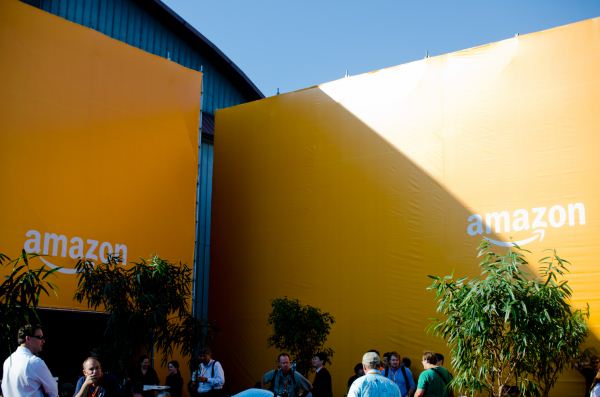
In about an hour and a half minutes I'll be updating live from Amazon's press event here in Santa Monica, CA, where it's expected the company will show off the next Kindle Fire, a separate tablet, a new Kindle e-reader, and perhaps even an Amazon smartphone. This, of course, takes place about ten months after the release of the original Kindle Fire, so it is about the right time to be hearing about the newest model.
As for the phone? Reports from The Verge state that it's coming, but may not make an appearance at the event here today. I'm hopeful it does, mostly because I'd love to see what Amazon is cooking up after I missed checking out their Seattle offices after staying in the city for a week.
Not to spur up too many rumors, but considering the massive changes to 7" tablets over the past year, scaling down from thick tablets like the Fire to thin, light devices like the Nexus 7 and a personal favorite, the Samsung Galaxy 7.7 is my biggest concern. Amazon's already had plenty of troublewith the Fire not playing well with Android apps thanks to Amazon's own app marketplace, which severely limits the number of apps available. One of the two saving graces - excellent pricing and Amazon Prime stream - is gone completely. So it should be interesting what the internet retail giant is planning.

More...
-
09-06-12, 06:00 PM #2185
Anandtech: Gigabyte X79S-UP5 WiFi Review: Ultra Durable 5 Meets the C606 Chipset
As part of the Computex 2012 show, Gigabyte demonstrated to us their new version of Ultra Durable.  This fifth iteration of their power delivery combines their previous features with a new phase from International Rectifier, which is marketed to offer up to a 60°C lower temperature than traditional MOSFET solutions.  Initially this new design is being paired with six motherboards, all designated with UP rather than UD in the name.  The first of these we have in is the X79X-UP5 WiFi, which combines Ultra Durable 5 with the C606 chipset.  The C606 chipset is the server version of the X79 chipset, which enables increased IO and up to eight SAS ports.  Read on for the analysis and review.

More...
-
09-06-12, 09:30 PM #2186
Anandtech: Amazon Kindle Preview: Paperwhite, Fire (2), and Fire HD 7" & 8.9"
Earlier today Amazon revealed four new Kindle devices: a new Touch e-reader called the Kindle Paperwhite; the latest update to the Fire (not the Fire 2, just Kindle Fire); the Kindle Fire HD 7", and Kindle Fire HD 8.9". You can read the "liveblog" covering the event here.
Amazon's full-on assault against tablets and e-readers doesn't come as much of a surprise, but their announcements regarding actual hardware are interesting. Sure, everything's thinner, lighter, with a better battery and plenty of new software features. But all of the tablet devices are also running on TI's OMAP chips. In order, the Fire (2) uses the 4430, Fire HD 7" has the 4460, and the 8.9" has the 4470. 
Benchmarking was wholly restricted, so I was really limited with what I could do per device. Both of my Sunspider tests, which would have been skewed regardless due to really shoddy Wi-Fi plus Amazon's Silk browser (which runs a lot of the processing on the backend to produce faster results), were foiled by Amazon representatives. I spoke with Peter Larsen, VP of Kindle at Amazon, and he said they weren't allowing any benchmarks as of yet. So all preview notes are my own qualitative thoughts.
A few tidbits regarding the latest Kindle Fire tablets (as well as the e-readers). They are all ad-based, utilizing the Special Offers program to help keep the prices down while displaying ads at lock screens and within certain apps. Unlike previous Kindle e-readers though, all upcoming Kindle devices will come with Special Offers built-in. You can't opt-out of the service, even if you plan on using the FreeTime kids application (though there are some barriers currently in place). This isn't necessarily a bad thing; it means interested buyers can get these tablets for low prices because of the ads, not in spite of them. And since they're not really intrusive, I'd be willing to sacrifice a lock screen for an ad.Amazon Tablet Specification Comparison   Kindle Fire Kindle Fire (2) Kindle Fire HD 7" Kindle Fire HD 8.9" Dimensions 190 x 120 x 11.4mm 189 x 120 x 11.5mm 193 x 137 x 10.3mm 240 X 164 X 8.8mm Display 7-inch 1024 x 600 IPS 7-inch 1024 x 600 IPS 7-inch 1280 x 800 IPS 8.9-inch 1920 x 1080 IPS Weight 413g 400g 395g 567g Processor 1GHZ TI OMAP 4430 (2 x Cortex A9) 1.2GHz TI OMAP 4430 (2 x Cortex A9) 1.2GHz TI OMAP 4460 (2 x Cortex A9) 1.5GHz TI OMAP 4470 (2 x Cortex A9) Memory 512MB 1GB 1GB 1GB Wireless Single-band Wi-Fi Single-band Wi-Fi Dual-band, dual antenna (2.4GHz, 5GHz, MIMO) Dual-band, dual antenna (2.4GHz, 5GHz, MIMO) Storage 8GB (6.5GB usable) 8GB (5.5 usable) 16GB/32GB (12.6GB/26.9GB usable) 16GB/32GB Wi-Fi, 32GB/64GB LTE Battery 16Whr ? ? ? Pricing $199 (original price; no longer available) $159 $199/$249 $299/$369 - Wi-Fi
$499/$599 - LTE
All three of the Kindle Fire tablets include Special Offers, though the FreeTime application - essentially a kid's-zone where parents can set the duration and which apps, videos, and books kids can access- is unaffected by the Special Offers. I've reached out to Amazon regarding whether there is some sort of guideline for ads when FreeTime is enabled, but I was told definitively that apps taking advantage of Special Offers are fair game. Meaning if you have any app that works in FreeTime that also relays ads, your kids will see those ads, even if they aren't appropriate for kids. The only security there is children who have used up their alloted time will be locked out from viewing any ads...but only if the previously set time parents determine has up and passed.
Whispersync is also available across the entire Kindle family, allowing for books, voiced books, and games to have data saved across any device. Amazon hasn't announced any specific game system, like iOS' Game Center, though I wouldn't be surprised if some service for games sprouted up over the course of the next year.
 

More...
-
09-07-12, 02:30 PM #2187
Anandtech: Intel’s Pentium and Core i3 Desktop Ivy Bridge CPUs Arrive
We knew the Core i3 Ivy Bridge CPUs were coming, but details on precisely when that would happen and how much they would cost were a bit harder to come by. Just after our recent Budget Buyer’s Guide last week, lower end 22nm processors from Intel showed up at Newegg and other retailers. Let’s quickly run over the chips, their features, and how they stack up compared to existing offerings. There are also a few other new Core i5 processors that recently showed up, which we’ll cover as well.
New Intel Pentium and Core i3 Processors Model Pentium G2120 Core i3-3220 Core i3-3220T Core i3-3225 Base Clock 3.1GHz 3.3GHz 2.8GHz 3.3GHz Max Turbo N/A N/A N/A N/A Cores 2 2 2 2 Threads 2 4 4 4 L3 Cache 3MB 3MB 3MB 3MB TDP 55W 55W 35W 55W Graphics HD Graphics HD 2500 HD 2500 HD 4000 iGPU Base Clock 650MHz 650MHz 650MHz 650MHz GPU Turbo Clock 1.05GHz 1.05GHz 1.05GHz 1.05GHz Quick Sync No Yes Yes Yes WiDi No Yes Yes Yes Hyper-Threading No Yes Yes Yes VT-x Yes Yes Yes Yes VT-d No No No No AES-NI No No No No VT-x w/ EPT Yes Yes Yes Yes Pricing (Tray/Box) $86/$93 $117/$125 $117/$125 $134/$144 Online Price $100 $120 $130 $145
Starting from the top, we have the least expensive 22nm Ivy Bridge CPU we’ve seen to date, the Pentium G2120. While Intel’s pricing is slightly lower than Newegg’s $100, it’s still too expensive to actually displace the Celeron G530 as our budget CPU recommendation—especially when you can find sales where the G530 is going for just $39 shipped! The HD Graphics in the Pentium should be slightly faster than the HD Graphics in the older Celeron, as they’re the newer DX11 GPU core (without Quick Sync or some of the other “extras” enabled), but even so they’re not fast enough to really warrant spending three times as much money.New Intel Core i3 and Core i5 Processors Model Core i3-3240 Core i3-3240T Core i5-3330 Core i5-3350P Base Clock 3.4GHz 2.9GHz 3.0GHz 3.1GHz Max Turbo N/A N/A 3.2GHz 3.3GHz Cores 2 2 4 4 Threads 4 4 4 4 L3 Cache 3MB 3MB 6MB 6MB TDP 55W 35W 77W 69W Graphics HD 2500 HD 2500 HD 2500 No iGPU Base Clock 650MHz 650MHz 650MHz NA GPU Turbo Clock 1.05GHz 1.05GHz 1.05GHz NA Quick Sync Yes Yes Yes No WiDi Yes Yes Yes No Hyper-Threading Yes Yes No No VT-x Yes Yes Yes Yes VT-d No No Yes Yes AES-NI No No Yes Yes VT-x w/ EPT Yes Yes Yes Yes Pricing (Tray/Box) $138/$147 $138/NA $182/$187 $177/$177 Online Price $150 NA $200 $190
Most of the Core i3 models fall into a similar category, with the exception of the i3-3225. If you’re going iGPU for your graphics, the difference between HD 2500 and HD 4000 is quite significant and makes the extra $20-$25 pretty reasonable. There are also the two lower power “T” parts, which might be of some interest to users looking at building a mini-ITX system or a quiet HTPC, but again the cost is quite high for what you’re getting. In terms of features, it’s also worth pointing out that where the Pentium (and Celeron) line trims a lot of features like Quick Sync and Hyper-Threading, Core i3 still leaves out the AES-NI instructions and VT-d support; if you need full hardware virtualization support, Core i5 might be the better choice.
As for the two new Core i5 processors, the i5-3330 is the least remarkable. It’s basically a lower clocked version of the already shipping i5-3450, but it does add VT-d support. Interestingly, despite similar suggested prices from Intel (the i5-3450 is actually supposed to cost a few dollars more), the i5-3330 ends up being $10 more than the i5-3450. Unless you need VT-d, the choice between the two offerings is clear given the current pricing. The final new CPU is the i5-3350P, and this marks the first time we’ve seen any of the Ivy Bridge processors with no iGPU. Clock speeds aren’t particularly compelling, but the TDP is slightly lower so that might be worth considering, especially if prices come down. It a killer app ever comes out for Quick Sync, though, owners of the i5-3350P might end up regretting their choice of CPU—again, given they’re currently at the same price, we think the i5-3450 is a better option.
Availability of all of the CPUs is somewhat limited right now, with only Newegg stocking the majority of the chips (outside of the OEM-only i3-3240T). We expect that to change over the next week or two, however, and that should force some of the prices down by as much as $15-$20 if you can hold off for a bit longer.

More...
-
09-07-12, 02:30 PM #2188
Anandtech: Haswell at IDF 2012: 10W is the New 17W
Earlier this week Intel let a little bit of information leak about Haswell, which is expected to be one of the main focal points of next week's Intel Developer Forum. Haswell is a very important architecture for Intel, as it aims lower on the TDP spectrum in order to head off any potential threat from ARM moving up the chain. Haswell still remains very separate from the Atom line of processors (it should still be tangibly faster than IVB), but as ARM has aspirations of higher performance chips Intel needed to ensure that its position at lower power points wasn't being threatened.
The main piece of news Intel supplied was the TDP target for Haswell ULV (Ultra Low Voltage) parts is now 10W, down from 17W in Sandy and Ivy Bridge. The standard voltage Haswell parts will drop in TDP as well, but it's not clear by how much. Intel originally announced that Haswell would be focused on the 15 - 25W range, so it's entirely possible that standard voltage parts will fall in that range with desktop Haswell going much higher.
Intel also claims that future Haswell revisions may push even lower down the TDP chain. At or below 10W it should be possible to cram Haswell into something the thickness of a 3rd gen iPad. The move to 14nm in the following year will make that an even more desirable reality.
Although Haswell's design is compete and testing is ahead of schedule, I wouldn't expect to see parts in the market until Q2 2013.
Early next year we'll see limited availability of 10W Ivy Bridge ULV parts. These parts will be deployed in some very specific products, likely in the convertible Ultrabook space, and they won't be widely available. Any customer looking to get a jump start on Haswell might work with Intel to adopt one of these.
The limited availability of 10W ULV Ivy Bridge parts does highlight another major change with Haswell: Intel will be working much closer than it has in the past with OEMs to bring Haswell designs to market. Gone are the days when Intel could just release CPUs into the wild and expect its partners to do all of the heavy lifting. Similar to Intel's close collaboration with Apple on projects like the first MacBook Air, Intel will have to work very closely with its PC OEMs to bring the most exciting Haswell designs to market. It's necessary not just because of the design changes that Haswell brings, but also to ensure that these OEMs are as competitive as possible in markets that are heavily dominated by Apple (e.g. the tablet market).
Don't expect any earth shattering increases in CPU performance over Ivy Bridge, although I've heard that gains in the low double digits are possible. The big gains will come from the new GPU and on-package L4 cache. Broadwell (14nm, 2014) will bring another healthy set of GPU performance increases but we'll likely see more than we did from IVB with the transition to Haswell on the graphics side.
Configurable TDP and connected standby are both supported. We'll also see both single and dual-chip platforms (SoC with integrated IO hub or SoC with off-chip IO hub), which we've known for a while. We'll get more architectural details next week, as well as information about all of the new core and package power states. Stay tuned.

More...
-
09-07-12, 02:30 PM #2189
Anandtech: Audience earSmart Not in Upcoming iPhone, Suggests New SoC?
Since the iPhone 4, Apple has been including Audience earSmart voice processors in devices to improve both receive and transmit audio for handsets. The iPhone 4 started the trend with a discrete Audience voice processor, and with A5 Apple made the unique move of integrating that IP into their own silicon, something we have yet to see be done with any of the other handset vendors. Since then I've seen Audience in a host of handsets for suppressing noise, reducing echo, and cleaning up audio in both near (phone on your head) and far field (speakerphone and hands free) modes. Getting clean audio is important not just for understanding voice calls, but also maximizing any potential silent gaps in normal speech which in turn enables a significant power savings on voice calls. In addition recent emphasis on handset voice recognition furthers the need for cleaned voice audio.
Recording demonstrations of what the transmit audio sounds like has been a regular feature in our smartphone reviews, and I've included a few comparisons above just as a refresher. 
Yesterday Audience provided news to investors that although it had developed and licensed a new voice processor for use by a particular major OEM (which was noted as Apple in a follow up conference call), it does not believe it will see inclusion in the OEM's next upcoming product. 
Pursuant to a statement of work under the MDSA, amended in March 2012, Audience developed and licensed a new generation of processor IP for use in the OEM's devices. However, the OEM is not obligated to use Audience's processor IP.There are a number of other players in the noise rejection game, and most are solutions from the SoC vendors themselves. For example, both Qualcomm (Fluence) and Texas Instruments have and license their own noise reduction technology usually alongside purchase of any SoC and PMIC combo, though these implementations either use blind source detection with an array of microphones or a beamforming technique. In addition audio codec players such as Wolfson also have solutions for handset makers.
 
Audience now believes that it is unlikely that the OEM will enable Audience's processor IP in its next generation mobile phone. Audience is not aware of any intended changes by this OEM to its use of Audience's processors or processor IP in prior generations of the OEM's mobile phones.
Whether Apple has gone with an in-house solution of its own or licensed one of these other blocks is unknown, however. A number of carriers have voice quality standards which much be met to get approval or subsidy, I've been told by a number of players that AT&T's voice quality standards are some of the highest out there, so it will be interesting to see whether some other IP has been selected or if an Apple-proprietary solution is included. I look forward to running our noise rejection tests on any upcoming device and seeing what differences emerge. 
Also of particular interest is what implications this has on making an accurate prediction of what SoC will be in the noted upcoming iDevice. Audience's earSmart IP was previously integrated into the A5 SoC (S5L8940) directly, and to the best of my knowledge was inherited into the 32nm A5R2 (S5L8942) revision. As a result it isn't a logical jump at all to suppose that we'll see a new SoC entirely for this upcoming iPhone launch.
Source: Audience

More...
-
09-10-12, 12:00 PM #2190
Anandtech: The AnandTech Podcast - Episode 4
I didn't lug the Blue yeti across the country for nothing: we have episode 4 of the AnandTech Podcast up for you all to listen to. Given the timing (we recorded it late Sunday evening) this one just features Brian and myself, but there's no shortage of things to talk about. 
In this mostly smartphone focused episode we talk about last week's announcements from Nokia and Motorola. Brian also talked about his time at HTC in NYC this past week. We discuss Windows Phone 8 a bit and prepare for this week with the Intel Developer Forum, Haswell and the new iPhone launch. 
There's even a little teaser at the beginning about a certain well known chip architect that I had the pleasure of having a conversation with in SF. 
The AnandTech Podcast - Episode 4
featuring Anand Shimpi & Brian Klug
iTunes
RSS - mp3, m4a
Direct Links - mp3, m4a
Total Time: 1 hour 37 minutes
As always, comments are welcome and appreciated. Let us know what you liked, hated and want to hear more of.

More...
Thread Information
Users Browsing this Thread
There are currently 27 users browsing this thread. (0 members and 27 guests)




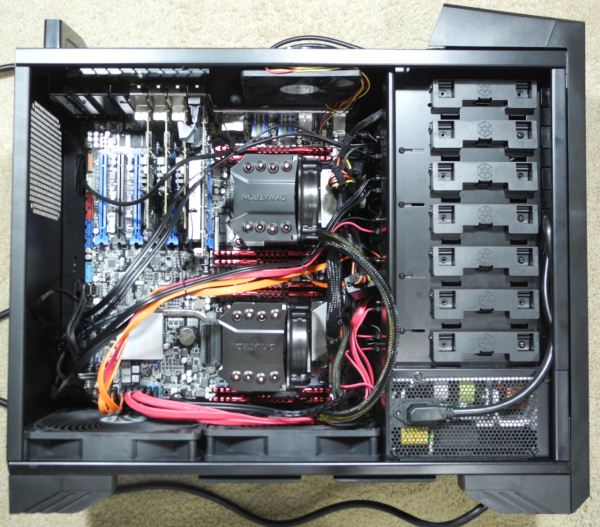



 Quote
Quote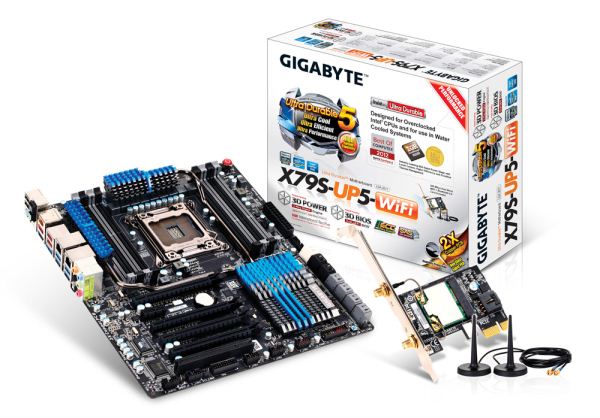
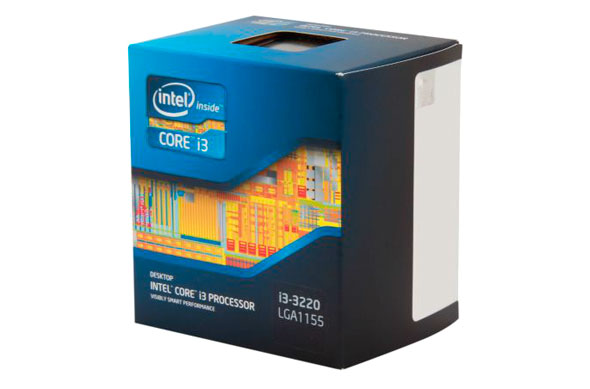
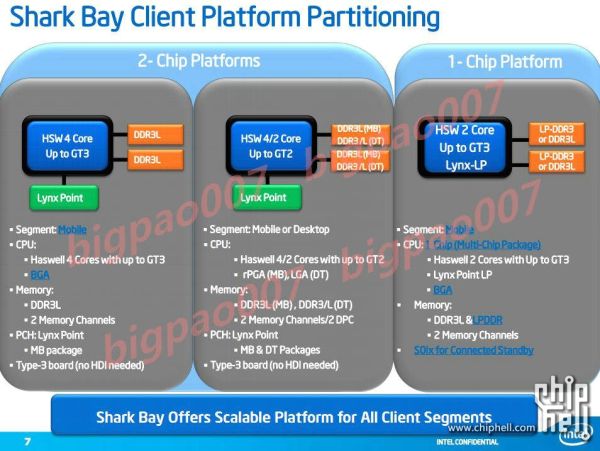
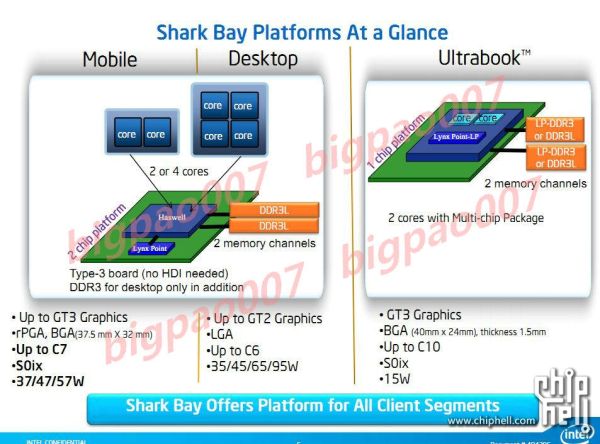
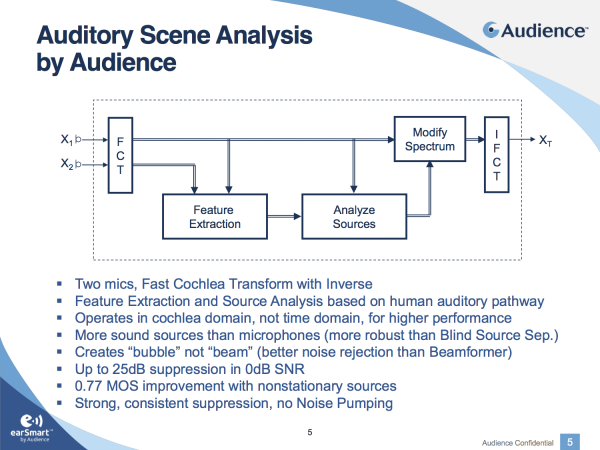

















Bookmarks